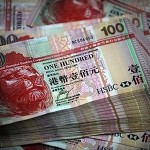Gold dropped for a second straight day on Friday, erasing partially its first weekly advance in three before todays U.S. jobless data that is expected to point at improving economic performance.
On the Comex division of the New York Mercantile Exchange, gold futures for August delivery traded at $1 240.55 per troy ounce at 8:03 GMT, down 0.91%. Prices ranged between days high and low of $1 249.75 and $1 238.25, which was hit during the early European session. The precious metal trimmed its weekly gain to nearly 0.5% after settling last week and the preceding one 4.77% and 6.80% lower, respectively.
Gold has been tracking shifting expectations for an earlier-than-expected deceleration of Feds Quantitative Easing throughout the year. The precious metal crumbled 23% in the second quarter as Ben Bernanke, Fed chairman, announced the central bank will most likely scale back its bond purchasing program during the second half of the year, if the economys recovery keeps in line with Feds expectations. According to Bernanke, Feds moves are tied to what happens in the economy and the central bank has no fixed plan, but sentiment points at reducing bond purchases. Bernanke said that if the economy continues to improve in line with Fed’s projections, it would be “appropriate to moderate the monthly pace of purchases later this year”, and end the program as the unemployment rate drops to 7%, which Fed expects to happen around mid-2014.
Investors are looking ahead into today’s key Unemployment Rate and Change in Non-Farm Payrolls indicators, which will provide further information on the pace the U.S. economy is recovering at. Preliminary estimates suggest a 0.1% fall in the Unemployment Rate, 7.5% down from 7.6%. Change in Non-Farm Payrolls are expected to stand at 165 000, down from 175 000 in May. If readings prove positive or even exceed expectations, this would further strengthen the dollar and pressure gold. The precious metal is used mainly as a hedging strategy against inflationary effects, which arise amid loose monetary policies, such as Quantitative Easing. An earlier deceleration of Feds bond purchasing program will additionally cripple golds demand.
The dollar index, which tracks the greenbacks performance versus six main counterparts was up 0.30% today. September futures traded at 84.21 at 7:48 GMT, hitting a new five-week high. Yesterday, the gauge marked a five-week high of 84.15 following Mario Draghis comments that ECBs monetary policy will “remain accommodative as long as needed” and added that interest rates will stay low for an “extended period of time”. The dollar index settled 0.66% higher yesterday, extending this weeks gains to 0.9% after ending last week 0.98% higher and surging 2.21% the preceding one.
Lv Jie, an analyst at Cinda Futures Co. said for Bloomberg: “Everyone will be watching tonight’s U.S. jobs number very closely. If the report backs a stronger dollar, that will be bearish for gold.”
Meanwhile, gold drew some support as recent financial problems in peripheral Euro zone countries spurred demand for the metal as a storage of value. The yellow metal tumbled to $1 180.50 last Friday, the lowest since August 2010, after which it rebounded and settled 0.8% higher on Wednesday. Political tension in Italy arose as a coalition partner of Prime Minister Enrico Letta threatened to withdraw support. Portugal’s Finance Minister, Vitor Gaspar, resigned on Monday as data showed the nations budget deficit widened during the first quarter. The country’s foreign minister also deposited his resignation on Tuesday. Portugals 10-year bond yield rose above 8% on July 3 for the first time since November. Borrowing costs in Spain and Italy also surged. Meanwhile, Greece officials announced the country won’t be able to meet the “troika”‘s deadline on public reforming and is hoping for new arrangements.
Lower gold prices also lured in investors and sparked physical demand. Mark O’Byrne, the executive director of Dublin-based GoldCore Ltd. said for Bloomberg: “A recovery will be tentative initially but a return of the euro zone debt crisis could spark a more sustainable rally. Many jewelers internationally are likely to use the recent price falls as an opportunity to stock up.”
Elsewhere on the precious metals market, silver, platinum and palladium are all marking daily losses. Silver for September delivery traded at $19.188 an ounce at 7:54 GMT, plunging 2.60%. Prices ranged between days high and low of $19.583 and $19.087 respectively. Platinum October futures stood at $1 337.30 an ounce, down 0.71%. The metal held in range between $1 348.70 and $1 331.55. Palladium for September delivery traded at $672.60 at 7:46 GMT, falling 1.91%. Prices ranged between days high and low of $677.90 and $671.10 respectively.





